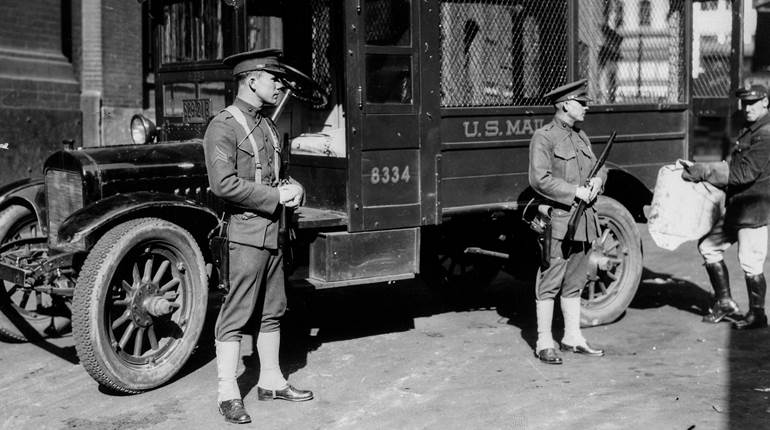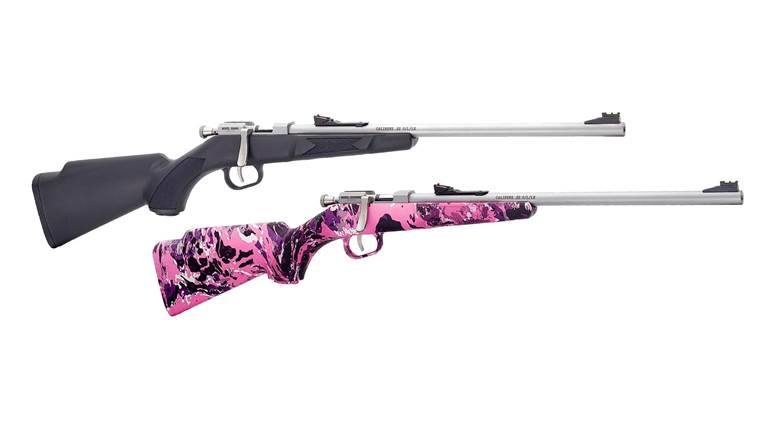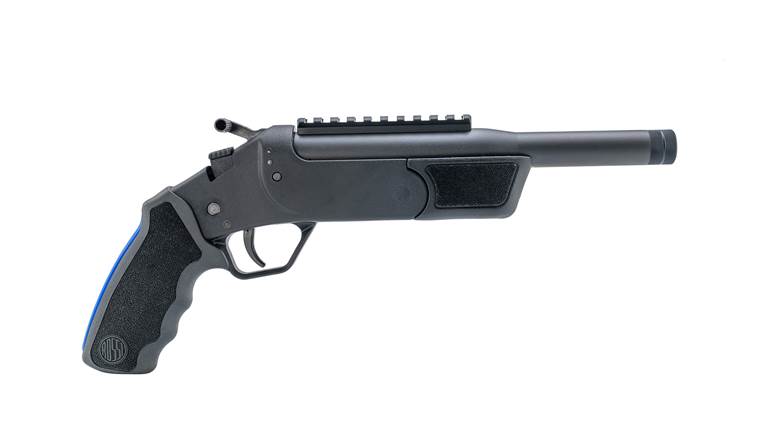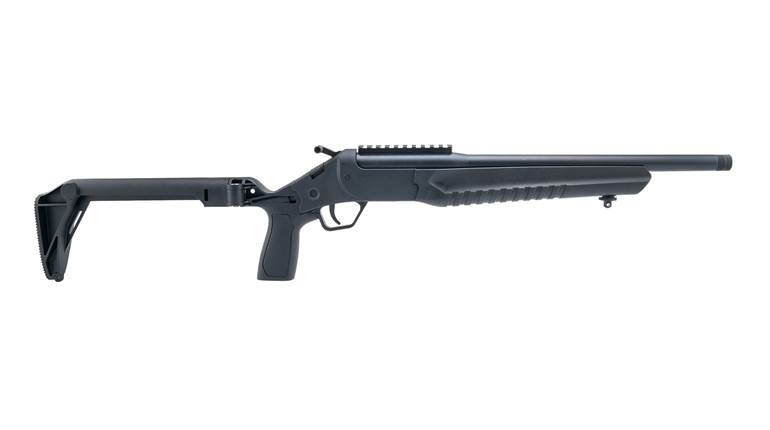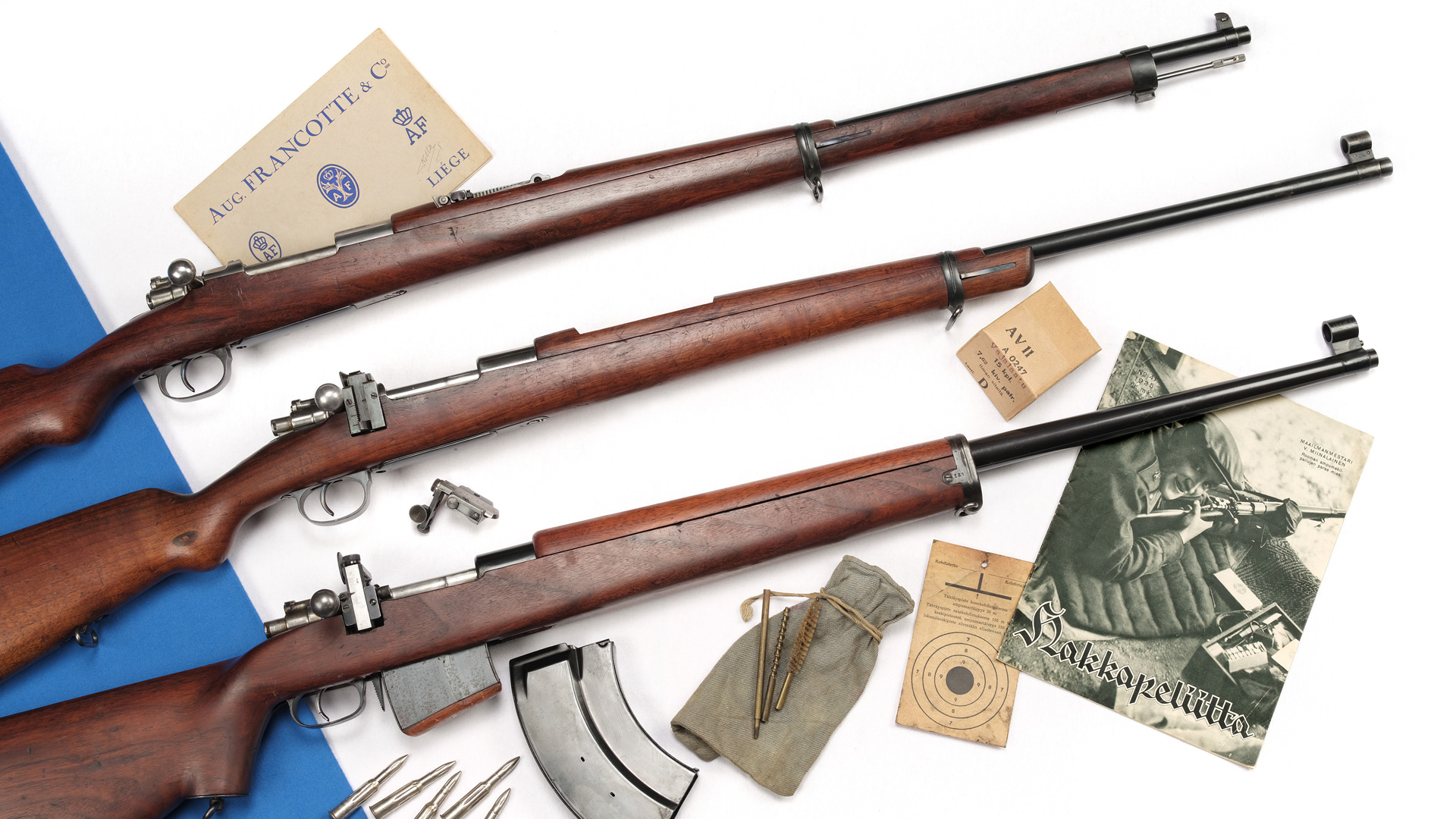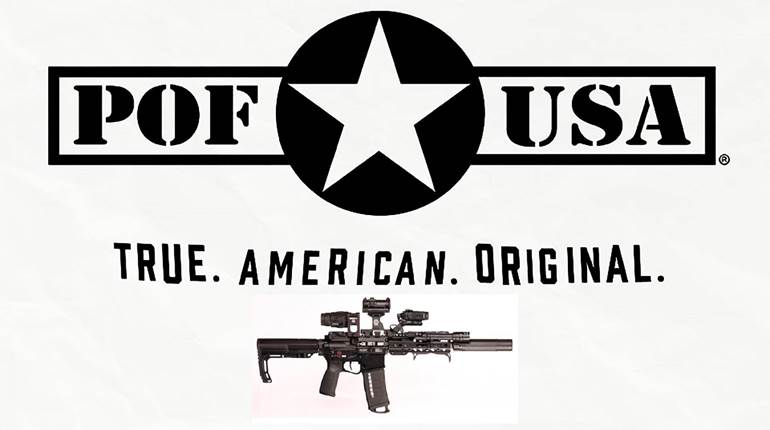
The genesis of the Trapdoor actually dates from just after Appomattox. The just-concluded American Civil War resulted in drastic reductions in the size of the U.S. Army, accompanied by severe budgetary restrictions. At the same time, ever-increasing numbers of settlers began the trek to the largely unsettled American West. This burgeoning westward migration exacerbated problems with often-hostile Indian tribes, and the Army was charged with providing the settlers some measure of protection.
The Civil War proved the value of breechloading arms as compared to muzzleloaders, and military planners of the day realized it was essential to provide the skeleton U.S. Army with breechloaders to partially offset its numerical inferiority.

Even though some repeating Spencer cavalry carbines were on hand, there were no comparable infantry rifles in inventory capable of handling more powerful metallic cartridges suitable for general infantry use. But Congress was in no mood to fund additional appropriations with tens of thousands of serviceable muzzleloading rifle-muskets stored in government warehouses.
The only reasonable solution was to devise a method to modify the existing muzzleloaders to breechloaders. To this end, Springfield Armory was directed by Chief of Ordnance Gen. A.B. Dyer to formulate a method by which the standard muzzleloading rifle-musket could be converted to a breechloading rifle. Springfield Master Armorer Erskine S. Allin was charged with the task.
Model of 1865 “First Allin Conversion”
Allin’s approach was simple and consisted primarily of milling out the rear portion of the barrel on the muzzleloader and fastening a hinged breech block on top of the barrel. A thumb-operated cam latch opened and closed the breechblock, and a ratchet-operated extractor removed the fired cartridge case. Allin was granted U.S. Patent Number 49,959 on September 19, 1865, for his design. A .58-cal. rimfire cartridge was developed, which allowed the original barrel to be utilized without modification or replacement.

The resulting mechanism was not unlike that of a trapdoor and the general design was soon unofficially dubbed “Trapdoor” or “Trapdoor Springfield.” After preliminary testing, it was adopted as the “Model of 1865,” and 5,000 Model 1861 Rifle-Muskets were ordered to be converted. It is estimated that the cost of the conversion of a M1861 rifle-musket to a breechloading M1865 rifle was only some $5, which was a fraction of the cost of a newly made arm.
Except for changes directly related to the breechloading mechanism, the M1865 was essentially unchanged from the M1861. The barrel and furniture retained the “National Armory Bright” finish, and M1865 rifles typically had newly made “1865” dated lockplates. The original 40” barrel of the M1861 was kept intact, as was the original ramrod and leather sling. The same Model of 1855 triangular-bladed bayonet was used as with the Civil War muzzleloaders.
Otherwise, the components were the same as found on the standard M1861. There are a few M1865-type rifles with shortened barrels secured by two bands (the original M1861/1865 had three barrel bands). With one known exception, such arms were altered by later commercial dealers to make them more attractive to potential civilian buyers who desired “cadet” length guns. The sole exception is a shortened “Prototype Model of 1865” rifle, which currently resides in the Springfield Armory Museum.
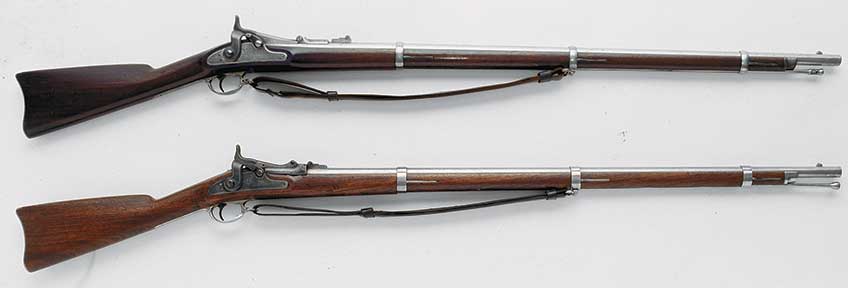
While Allin’s basic design premise was sound, the fact is that the 56 separate machining operations were required to manufacture the breechblock and thumbpiece, along with other machining operations to mill out the rear portion of the barrel, were quite time-consuming.
Also, the breech mechanism of the M1865 was too complex and prone to rattle, and the complicated “toothed” extractor/ejector system proved less than reliable. Another deficiency was that the .58-60-500 rimfire cartridge had rather poor ballistic performance in relation to its heavy bullet. Clearly, more refinement was needed to make the “First Allin Conversion” a viable rifle.
Model of 1866 “Second Allin Conversion”
The Ordnance Department evaluated the M1865 and developed an improved variant that was easier to make and more reliable than Allin’s initial design. It was built from converted M1863 muzzleloading rifle-muskets and featured a center-fire cartridge with markedly improved ballistics over the earlier, ponderous .58-cal. rimfire round.
Adopted as the “Model of 1866,” the rifle was modified from its original muzzleloading configuration by milling out the rear portion of the barrel and fastening a hinged “Trapdoor”-type breechblock. But the M1866’s breechblock was much less complicated and more reliable in operation than the M1865’s. The original .58-cal. barrel was retained, but was reamed out to approximately .64-cal. and an iron sleeve was brazed in place.
It was then rifled to .50 cal. for use with the new, center-fire .50-70 Gov’t cartridge. The breech block was dated “1866” (above an eagle head marking). The original Civil War vintage lockplates were retained, and examples dated “1863,” “1864” or “1865” may be noted. The original ramrod and leather sling were retained, and the M1855 bayonet remained in use. Except for milling out the rear of the barrel, adding the hinged breechblock and sleeving the barrel, the M1866 rifle was virtually identical to the former M1863.

Some 52,000 M1866 rifles were manufactured (a more accurate term would be “converted”) at Springfield between 1867 and 1869. Approximately half this number were sent to Europe for use in the Franco-Prussian War. The remaining 26,000 (approximately) M1866 .50-70 Gov’t rifles were issued to units of the U.S. military, and many were utilized in the American West.
The new breechloading rifle soon proved its mettle on July 31, 1867, when 28 U.S. Army soldiers armed with M1866s held off a vastly numerically superior force of Sioux Indians. The troops were on a woodcutting detail close to Fort Phil Kearny, Wyo. The soldiers turned over their wagons for cover, and the engagement was soon known as the “Wagon Box Fight.”
The small group of soldiers, armed with the new M1866 rifle, inflicted a number of causalities on the Indians. It is widely assumed that the outcome would have been much different if the troops had been armed with obsolete muzzleloaders. This and other engagements conclusively proved the worth of the breechloader to any but the most myopic observer.

In 1867 and 1868, 1,500 refurbished M1866 rifles with barrels damaged near the muzzle were salvaged by cutting about 4” from the ends of the barrels and fitting them to shortened M1863 rifle stocks. The modified arms, typically known today as “Model of 1866 Short Rifles” were then sold in Europe, but were not issued to American troops.
Likewise, 424 short M1866 “Cadet” Rifles were also fabricated at Springfield for use by military schools, including West Point. The “Short Rifles” and “Cadet Rifles” can usually be identified by the armory-quality workmanship of the shortened stocks and the proper spacing of the barrel bands. Thousands of other surplus M1866s were cut-down by Bannerman’s and others. Such commercially altered rifles are much more common (and much less valuable) than the products of the Springfield Armory.
Model of 1868
While the M1866 was a serviceable rifle, there were still some deficiencies, which were addressed with the “Model of 1868.” Unlike its predecessors, the Models of 1865 and 1866, the Model of 1868 was a newly manufactured rifle. There were some miscellaneous surplus Civil War-era parts used, such as lockplates, but the receiver, stock and (in most cases) the barrel were new production.
The Model 1868 breechblock seated more securely in the receiver and a spring-loaded extractor provided more efficient operation as compared to the two earlier “Allin Conversions.” The Model 1868 had a handier 321⁄2” barrel, as compared to the 40” barrel of its predecessors, and the stock had two barrel-retaining bands, rather than three. Some early Model 1868 barrels were made from shortened and lined musket barrels, but most were newly made.

The rifle was chambered for the same .50-70 Gov’t cartridge as the Model of 1866. The M1868’s breechblock was dated either “1869” or “1870,” and stamped with an eaglehead over crossed arrows. It was equipped with a rear sight having a folding adjustable leaf rather than the non-adjustable units of the Civil War rifle-musket sights used on the M1865 and M1866. The M1868 had a cleaning rod of a different pattern than used with the earlier variants. They were generally issued with longer leather slings, often made from two Civil War rifle-musket slings sewn together.

The M1868 also retained the M1855 bayonet and scabbard. But, in addition to the standard M1855 triangular blade bayonet, there were a relatively few “trowel bayonets” manufactured and issued in limited numbers in the late 1860s. The first was the Model 1868, which was followed by the Model 1869.
There were 52,145 Model 1868 rifles manufactured at Springfield Armory. In addition, some 3,422 short rifles based on the M1868 pattern were made by Springfield and adopted as the “Model of 1869 Cadet.” In addition to the M1868 rifle and M1869 Cadet rifles, there were a very small number (believed to be four) Model 1868-pattern cavalry carbines made for evaluation, although none were issued. The M1868 rifles were serially numbered on the left side of the receiver and barrel.

The M1868 rifle remained in active military service by the U.S. Army, Navy and Marine Corps well into the early 1880s, when it was eventually supplanted by the later .45-70 Gov’t Trapdoor.
Model of 1870
General of the Army William T. Sherman was a vocal opponent of the Trapdoor design and used his considerable influence to have a number of rifles of the Remington “Rolling Block” pattern chambered for .50-70 Gov’t manufactured at Springfield Armory in order to evaluate their effectiveness against the Trapdoor. At the same time, Springfield was directed to manufacture a slightly modified variant of the M1868 rifle to be issued concurrently with the Rolling Blocks for field trial and testing.
The new pattern, adopted as the “Model of 1870,” was quite similar to the M1868, except for the length of the receiver, which was 0.68” shorter. The M1870’s cleaning rod also had a double shoulder rather than the single shoulder of the M1868 rod.

The M1870’s breechblock was marked either “1870” or “Model 1870” in addition to the same eaglehead and crossed arrows found on M1868 breechblocks. The M1870 was not serially numbered, and just over 11,500 were made. The M1870 rifle utilized the same type of sling and M1855 bayonet as the M1868 rifle.
The M1870 rifle was issued to several U.S. Army infantry units, and they saw use during field trials and some combat action. Although some units preferred the Rolling Block, the overall assessment of the latest Trapdoor was generally favorable.
M1870 Carbine
In addition to the rifle variant, 361 Model of 1870 carbines were manufactured and issued for trials to several U.S. Army cavalry units. The M1870 carbine had the same action as the rifle but had a short 22” barrel and correspondingly shorter stock with a “ring and bar” sling attachment. The M1870 carbine was chambered for .50-70 Gov’t, and the breechblock was stamped “1870,” although the last 20 examples made were marked “Model 1870.”
The few M1870 carbines manufactured were issued to several U.S. Army cavalry units for field trial, and they saw hard use, including some combat action, in the early to mid-1870s. While not as desirable for close-range cavalry engagements as the repeating Spencer, the M1870 carbine and its .50-70 Gov’t cartridge possessed superior ballistic performance, particular at longer ranges.

The generally favorable results of the field trials and service use of the M1870 rifle and carbine resulted in an Ordnance Board headed by General A.H. Terry recommending in 1873 to adopt a .45-70 Gov’t version of both. The result was the famed “Model of 1873” .45-70 Gov’t Trapdoor Springfield rifle and carbine. Subsequent versions of the .45-70 Gov’t M1873 Trapdoor remained as the standard U.S. military rifles and carbines for most of the following three decades.
Although conceived out of economic necessity, the “First Trapdoors” not only served as a model for subsequent U.S. military arms, they provided valuable service to our troops in their own right. These “First Trapdoors” represent an important part in the evolution of U.S. military small arms.












